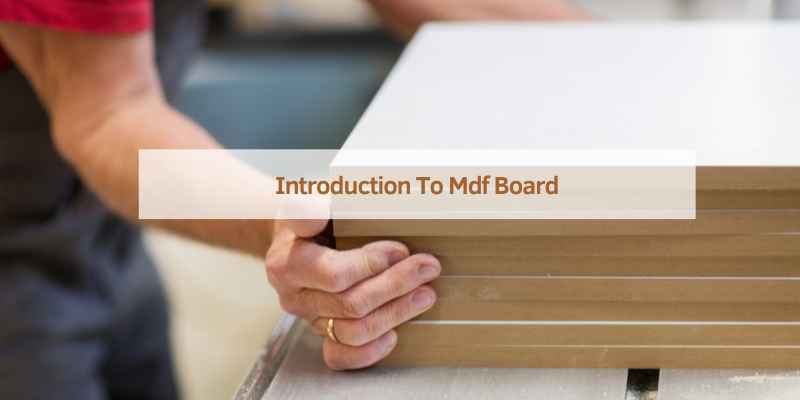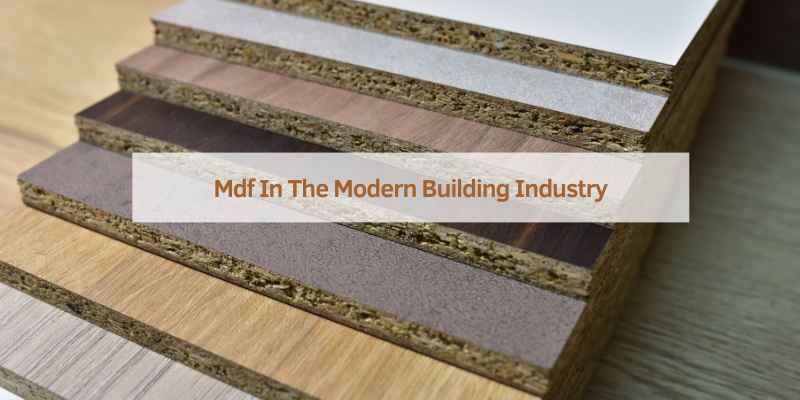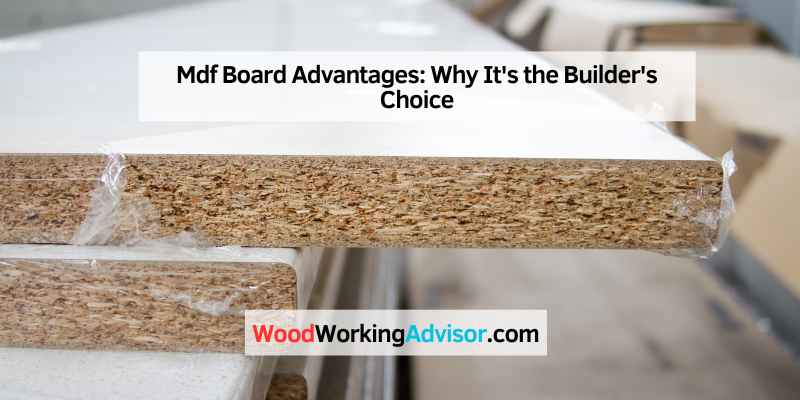MDF board stands for Medium Density Fiberboard. It is an engineered wood product made from wood fibers and resin.
MDF board is a popular choice for furniture and cabinetry. Its smooth surface and uniform density make it ideal for painting and veneering. It is also more affordable than solid wood and offers excellent workability. Homeowners and DIY enthusiasts appreciate its versatility and ease of use.
MDF board’s consistent structure allows for precise cutting and shaping, which is essential for intricate designs. Despite being less durable than plywood, it remains a preferred material due to its cost-effectiveness and adaptability. Always ensure proper ventilation when cutting or sanding MDF, as it can produce fine dust.
Introduction To Mdf Board
MDF, or Medium-Density Fiberboard, is a popular material in woodworking and construction. It’s known for its versatility and smooth finish. MDF boards are made from wood fibers, wax, and resin, which are compressed under high pressure and temperature.
Origins Of Mdf
MDF was first developed in the 1960s in the United States. It quickly gained popularity due to its cost-effectiveness and easy workability. Manufacturers use wood waste and by-products to create MDF, making it an eco-friendly choice. Over the years, the production process has improved, resulting in higher-quality boards.
Basic Properties
MDF boards have several key properties that make them ideal for various applications.
- Density: MDF is denser than plywood, which makes it strong and durable.
- Surface: The surface is smooth and uniform, perfect for painting or veneering.
- Workability: MDF can be easily cut, drilled, and shaped without splintering.
- Cost: It is more affordable than solid wood, making it a budget-friendly option.
Below is a table summarizing the basic properties of MDF:
| Property | Description |
|---|---|
| Density | Higher than plywood, ensuring strength. |
| Surface | Smooth and uniform, ideal for finishing. |
| Workability | Easy to cut, drill, and shape. |
| Cost | More affordable compared to solid wood. |

Cost-effectiveness
One of the main reasons many people choose MDF board is its cost-effectiveness. MDF board provides a budget-friendly solution for various construction and DIY projects. Let’s delve deeper into its affordability and compare it with other wood products.
Affordability
MDF board is significantly cheaper than many other wood products. This makes it an attractive option for those on a tight budget. The production process of MDF board is efficient, which helps keep the costs low. MDF board can be used for various applications, such as furniture, cabinetry, and shelving. This versatility adds to its cost-effectiveness.
| Wood Product | Average Cost per Square Foot |
|---|---|
| MDF Board | $0.50 – $1.00 |
| Solid Wood | $3.00 – $8.00 |
| Plywood | $1.00 – $2.50 |
Comparison With Other Wood Products
MDF board stands out when compared to other wood products. Solid wood is beautiful but expensive. It also requires more maintenance. Plywood is more affordable than solid wood but still more costly than MDF board.
- Solid Wood: High cost, requires frequent maintenance.
- Plywood: Moderately priced, more durable than MDF but less cost-effective.
- MDF Board: Low cost, versatile, easy to work with.
The low cost of MDF board does not compromise its quality. MDF board is durable and easy to cut. It also has a smooth surface, making it perfect for painting or laminating.
MDF board is an excellent choice for cost-conscious consumers. Its affordability and versatility make it a popular choice for many projects.
Versatility In Applications
Medium Density Fiberboard (MDF) is known for its incredible versatility. It serves various purposes across different industries. Its adaptability makes it a popular choice for many projects. Here, we delve into its significant uses in furniture manufacturing and construction.
Furniture Manufacturing
MDF boards are a favorite in furniture manufacturing. They offer a smooth surface that is ideal for painting and veneering. This quality allows for the creation of stunning furniture pieces.
Because MDF is easy to cut and shape, it is perfect for intricate designs. It helps in creating detailed carvings and patterns. This flexibility makes it a go-to material for custom furniture.
Another benefit is its uniformity. Unlike natural wood, MDF has no knots or grain patterns. This ensures a consistent finish on every piece of furniture.
Here are some common uses of MDF in furniture manufacturing:
- Cabinetry
- Bookshelves
- Wardrobes
- Tables and Desks
Construction Uses
In construction, MDF boards serve several critical roles. They are often used for interior projects due to their strength and durability.
MDF is used for creating wall panels and moldings. It adds a touch of elegance and sophistication to interiors. Its smooth surface is perfect for painting, ensuring a high-quality finish.
Builders also use MDF for doors and window frames. Its stability makes it less likely to warp or crack. This ensures long-lasting, reliable structures.
Here’s a quick look at some construction uses of MDF:
| Application | Benefits |
|---|---|
| Wall Panels | Easy to paint, smooth finish |
| Moldings | Elegant designs, durable |
| Doors | Stable, less likely to warp |
| Window Frames | Reliable, long-lasting |
Ease Of Customization
MDF board, or Medium-Density Fiberboard, offers great customization options. This makes it a favorite among DIY enthusiasts and professionals. The material is versatile and easy to work with. You can cut, shape, finish, and paint it effortlessly.
Cutting And Shaping
Cutting MDF board is simple with the right tools. You can use saws, routers, and other woodworking tools. The board does not splinter or chip. This ensures smooth edges and accurate cuts.
Shaping MDF board is just as easy. You can create intricate designs without much effort. The material’s density allows for detailed work. It holds its form well, even for complex shapes.
| Tool | Use |
|---|---|
| Jigsaw | For curved cuts |
| Table Saw | For straight cuts |
| Router | For detailed edges |
Finishing And Painting
Finishing MDF board gives it a smooth surface. Sand the edges and surfaces for best results. The material accepts primer and paint well. This allows for a flawless finish.
Painting MDF board is straightforward. Use a primer first to seal the surface. Then apply your choice of paint. The board absorbs paint evenly, ensuring a uniform color.
For a professional look, follow these steps:
- Sand the board lightly.
- Apply a primer coat.
- Let the primer dry completely.
- Paint with your desired color.
- Allow the paint to dry fully.
MDF board is a perfect choice for customized projects. Its ease of customization makes it accessible to all skill levels.
Consistent Texture And Strength
MDF board, also known as Medium Density Fiberboard, is a popular material in woodworking and furniture making. One of its standout features is its consistent texture and strength. This makes it a favorite for both DIY enthusiasts and professionals.
Uniform Density
The uniform density of MDF board is one of its biggest advantages. Unlike natural wood, MDF has a consistent density throughout the board. This ensures that every part of the board is equally strong and durable.
Here is a comparison table to illustrate the differences:
| Material | Density | Strength |
|---|---|---|
| MDF Board | Uniform | High |
| Natural Wood | Varies | Variable |
This uniform density also makes MDF board easier to cut and shape. It provides a smooth edge without splinters or cracks.
Lack Of Knots And Grains
MDF board has no natural knots or grains. This is a significant benefit over natural wood. Knots and grains can cause weak spots in wood, but MDF is free from these imperfections.
Here are some benefits of the lack of knots and grains:
- Smoother surface for painting or laminating
- No weak spots that can break under pressure
- Uniform appearance, perfect for modern designs
The absence of knots and grains ensures a clean, professional finish for any project. This makes MDF board a reliable choice for furniture, cabinetry, and decorative items.
Environmental Benefits
MDF board, or Medium Density Fiberboard, offers significant environmental benefits. It’s an eco-friendly option that supports sustainability. Let’s explore the key ways MDF board contributes to a greener planet.
Recycling Wood Waste
MDF board is made from recycled wood fibers. This process helps reduce waste in landfills. Factories use wood chips, sawdust, and other wood residues. These materials are pressed together to create MDF boards.
By recycling wood waste, we save trees and reduce deforestation. This practice also minimizes the need for virgin wood. As a result, it conserves natural resources and reduces carbon emissions.
Sustainable Forestry Practices
Many MDF manufacturers follow sustainable forestry practices. These practices ensure that trees are harvested responsibly. Forests are managed to maintain biodiversity and ecosystem health.
Here are some key points of sustainable forestry:
- Selective tree harvesting
- Replanting trees
- Protecting wildlife habitats
- Maintaining soil and water quality
By supporting sustainable forestry, MDF production helps to protect our forests. This approach also promotes long-term environmental health.
Durability Factors
MDF board is a popular material in furniture and construction. Its durability is one of the key reasons for its widespread use. Understanding the durability factors can help you make better choices for your projects.
Resistance To Warping
MDF board is known for its resistance to warping. Unlike natural wood, it does not expand or contract with humidity changes. This makes it ideal for areas with fluctuating moisture levels.
Let’s look at why MDF board resists warping:
- Uniform density throughout the board
- Lack of natural grain that causes expansion and contraction
- Consistency in its composition
These qualities ensure that your MDF furniture or structures remain stable and flat.
Longevity Under Proper Care
MDF board offers long-lasting performance if you take proper care of it. Regular maintenance and appropriate use can extend its life significantly.
Consider these tips for ensuring the longevity of MDF board:
- Keep it dry and clean
- Avoid excessive weight and pressure
- Use protective coatings like paint or varnish
- Ensure proper support in structures
By following these steps, you can enjoy the benefits of MDF board for many years.
Moisture Resistance Options
MDF Board is a popular material for furniture and construction. It is versatile, durable, and affordable. But moisture can damage regular MDF. This section explores different moisture resistance options for MDF boards.
Mdf Variants
There are several MDF variants available. Each offers different levels of moisture resistance.
- Standard MDF: This is the most common type. It is not suitable for moist environments.
- Moisture Resistant MDF (MR MDF): This type has special resins. It can resist moisture better than standard MDF.
- Exterior MDF: This is designed for outdoor use. It has a higher level of moisture resistance.
Suitability For Humid Conditions
In humid areas, choosing the right MDF variant is crucial. Standard MDF may warp or swell. Moisture Resistant MDF is better for kitchens and bathrooms. It can handle higher humidity levels.
For outdoor projects, Exterior MDF is a good choice. It can withstand rain and high moisture. Always seal the edges for extra protection.
| MDF Type | Moisture Resistance Level | Suitable Environments |
|---|---|---|
| Standard MDF | Low | Dry, indoor areas |
| Moisture Resistant MDF | Medium | Bathrooms, kitchens |
| Exterior MDF | High | Outdoor use |
Proper sealing and finishing are essential. Even moisture-resistant MDF needs protection. Use water-resistant paints and sealants. This will extend the life of your MDF projects.
Mdf In The Modern Building Industry
MDF, or Medium Density Fiberboard, is a game-changer in the building industry. It offers versatility and affordability. Today, MDF is used in various construction projects due to its durability and ease of use.
Innovations In Mdf Technology
Recent innovations in MDF technology have expanded its applications. Enhanced manufacturing processes now produce stronger and more durable boards.
Here are some key innovations:
- Moisture-resistant MDF: Ideal for kitchens and bathrooms.
- Fire-retardant MDF: Adds safety in commercial buildings.
- Eco-friendly MDF: Made from recycled wood fibers.
These innovations make MDF a top choice for builders.
Future Prospects
The future of MDF looks bright. Demand for sustainable and cost-effective materials is rising. MDF meets these needs perfectly.
Future prospects include:
- Advanced MDF composites with higher strength.
- Smart MDF with integrated technology for home automation.
- Expanded use in prefab construction for faster builds.
These advancements will continue to shape the building industry.
Here’s a quick comparison of different types of MDF:
| Type | Features | Best Use |
|---|---|---|
| Standard MDF | Cost-effective, easy to cut | Furniture, shelving |
| Moisture-resistant MDF | Water-resistant, durable | Kitchens, bathrooms |
| Fire-retardant MDF | Fire-resistant, safe | Commercial buildings |

Frequently Asked Questions
What Is Mdf Board Used For?
MDF board is used for furniture, cabinetry, shelving, and decorative projects. It offers a smooth surface for painting and veneering.
What Are The Disadvantages Of Mdf?
MDF is less durable than solid wood. It can swell and break when exposed to moisture. MDF is heavier and may off-gas formaldehyde.
Is Mdf Board Better Than Wood?
MDF board is cheaper and smoother than wood. Wood is stronger and more durable. Choose based on your project’s needs.
When Should You Not Use Mdf?
Avoid using MDF in damp or wet areas. It’s unsuitable for outdoor use. Do not use it for heavy load-bearing applications. MDF can’t handle screws well. It’s not ideal for high-impact environments.
Conclusion
Choosing MDF board offers versatility and durability for various projects. Its smooth surface is ideal for painting and finishing. MDF is cost-effective and easy to work with, making it a popular choice. Consider MDF for your next project to achieve professional results without breaking the bank.


